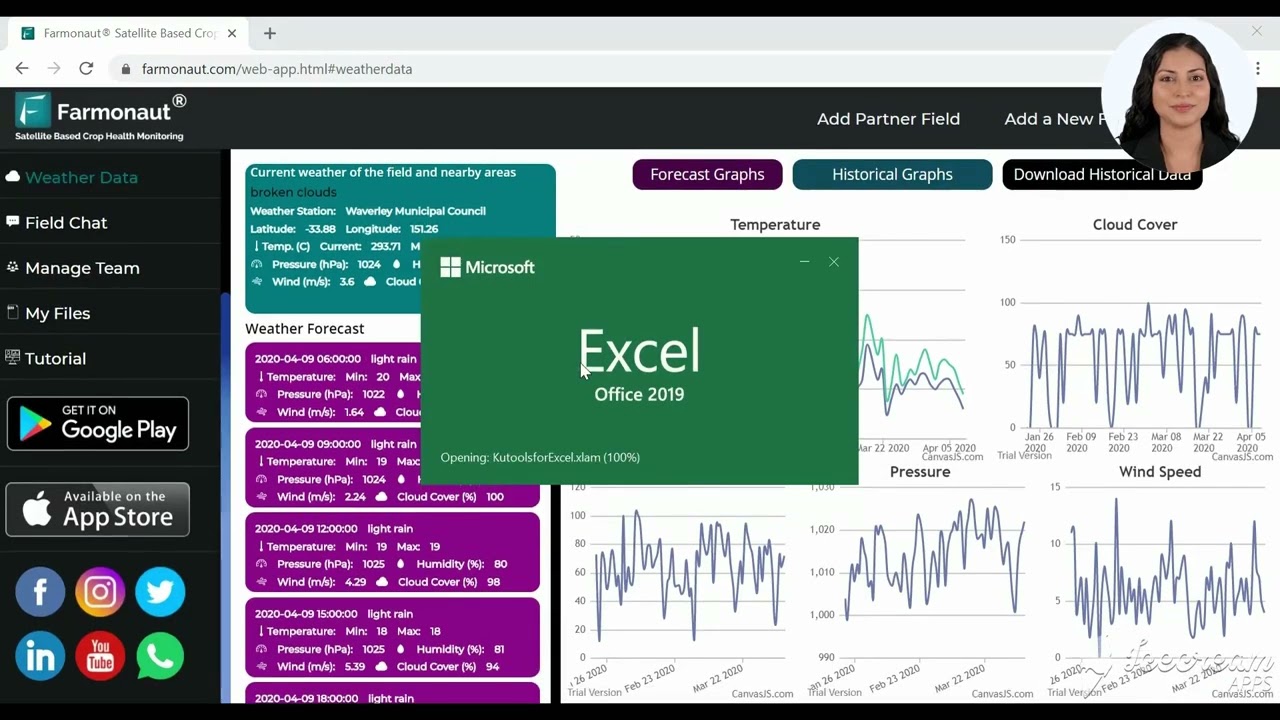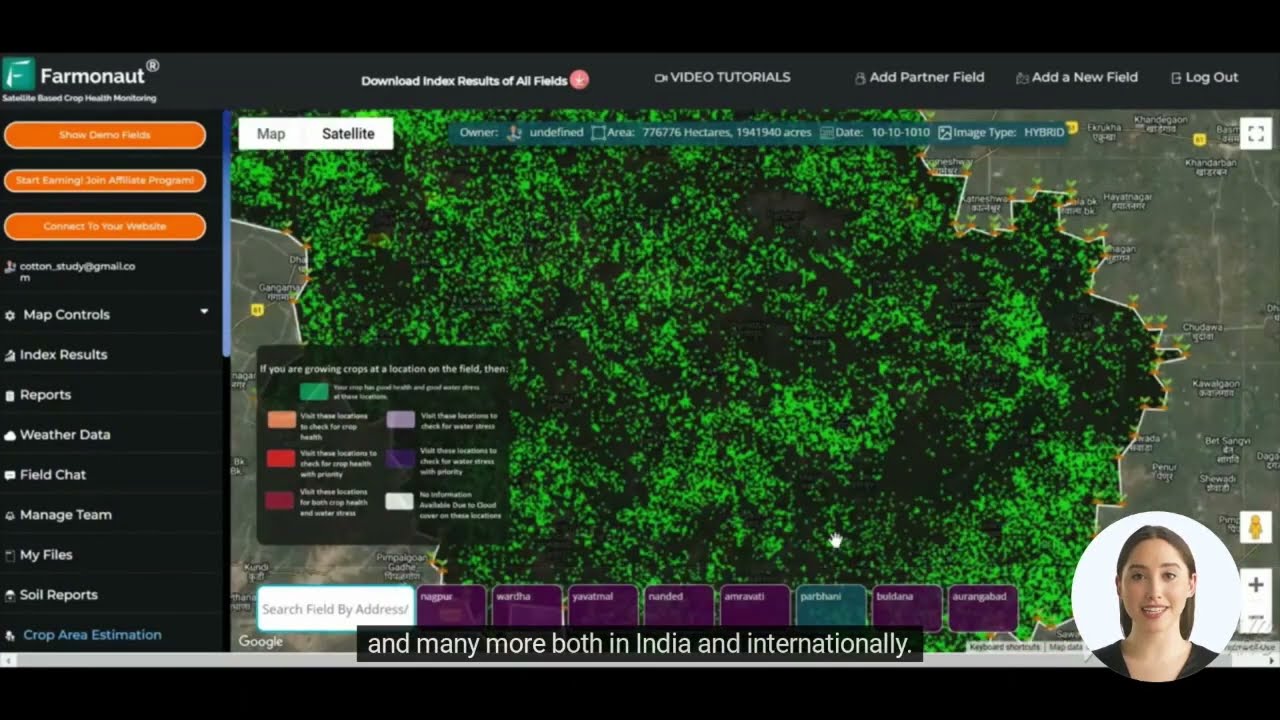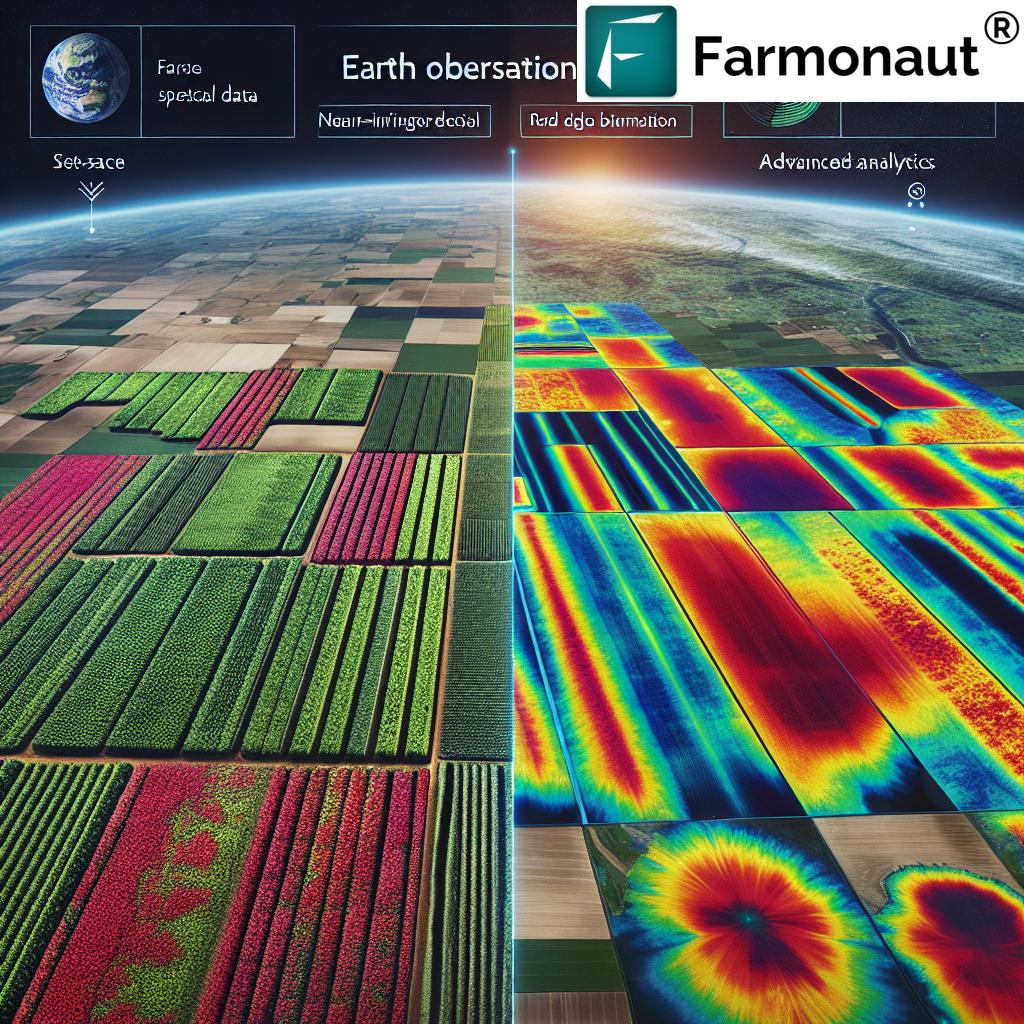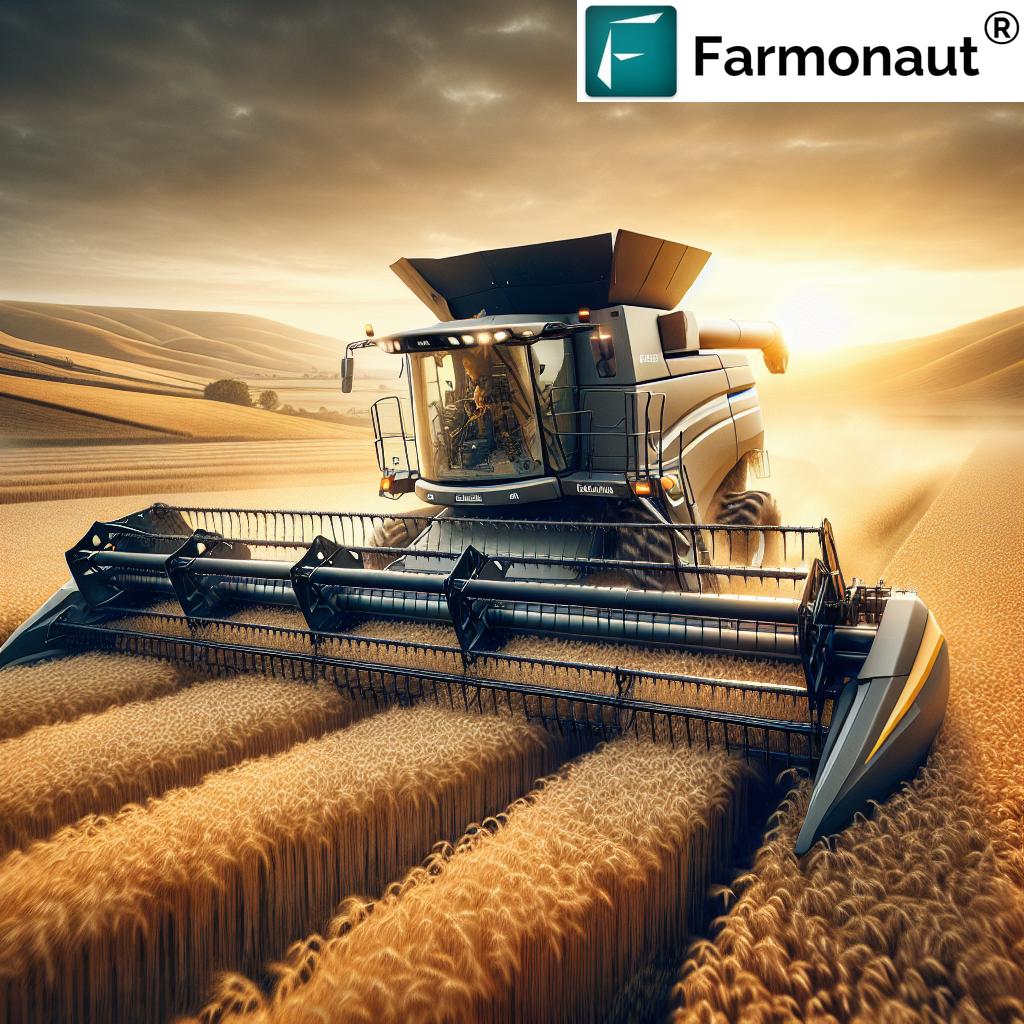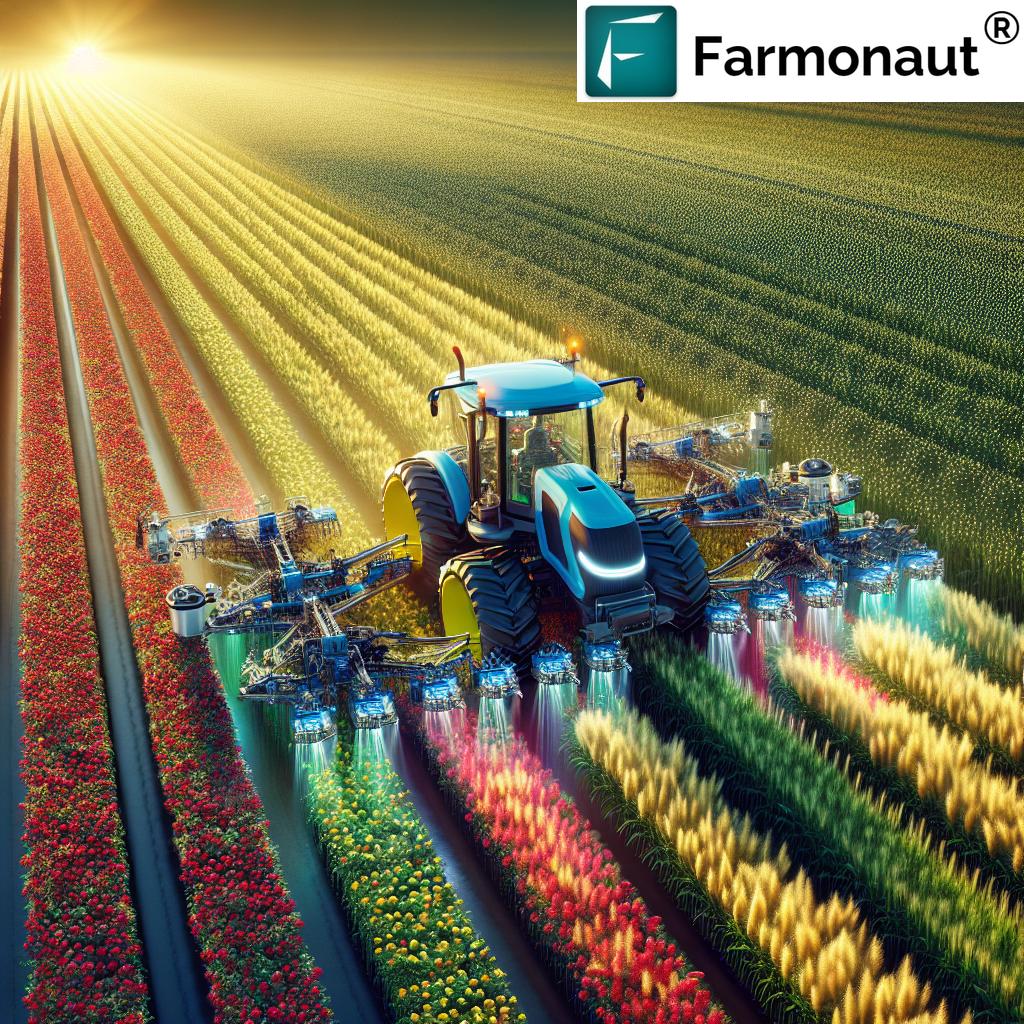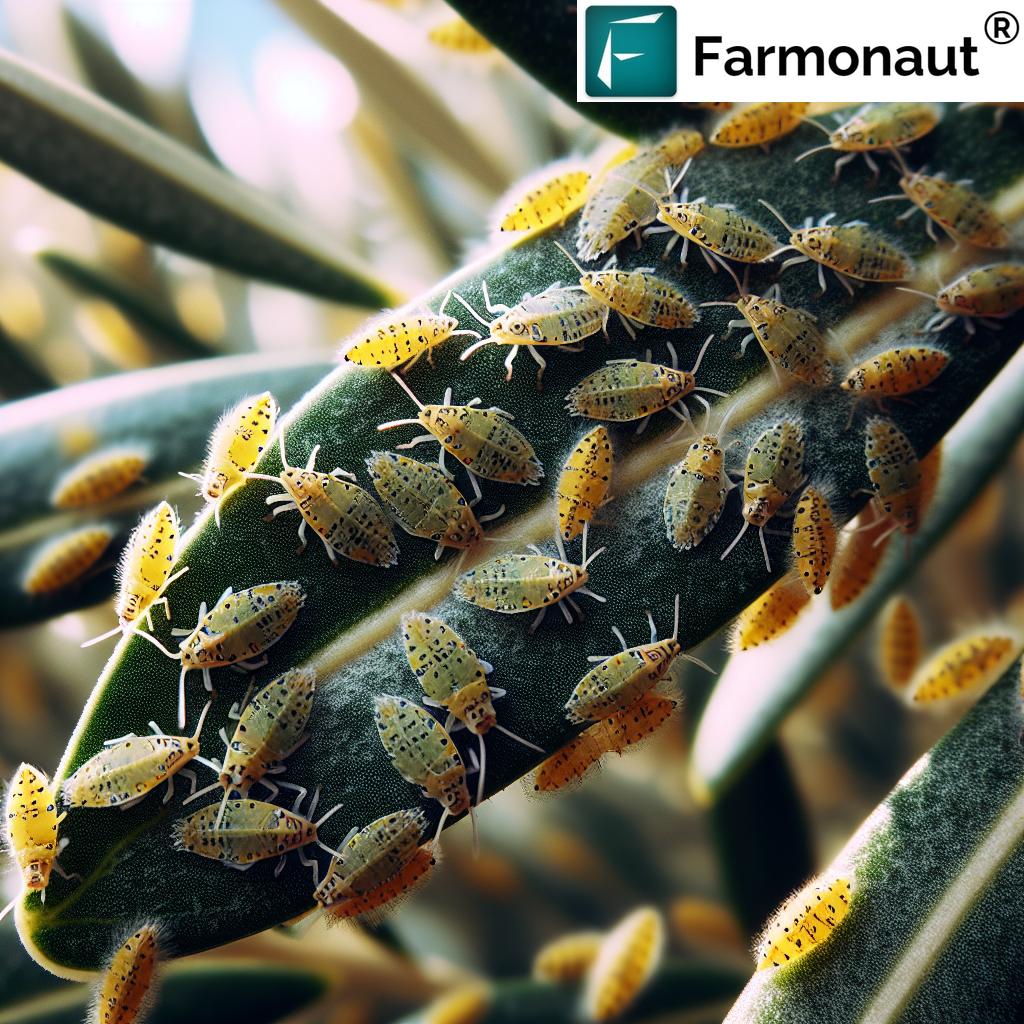Maximize Your Pasture Productivity: A Data-Driven Guide to Forage Management with Farmonaut

“Farmers can increase pasture productivity by up to 30% through data-driven forage management techniques.”
Welcome to our comprehensive guide on maximizing pasture productivity through data-driven forage management strategies. At Farmonaut, we understand the challenges farmers face in optimizing their grazing and hay production efficiency. That’s why we’ve created this winter planning guide to help you revolutionize your approach to forage management and boost your agricultural returns.
In this blog post, we’ll delve into essential techniques for calculating dry matter production, analyzing grazing records, and estimating forage yields. We’ll also explore the importance of summarizing production data to inform fertilizer allocation and identify high-performing pastures. By the end of this guide, you’ll be equipped with the knowledge and tools to make informed decisions and improve your farm’s efficiency.
The Importance of Data-Driven Forage Management
In today’s agricultural landscape, data-driven decision-making is crucial for maximizing farm productivity and sustainability. By leveraging advanced technologies and analytical techniques, farmers can gain valuable insights into their pasture performance, optimize resource allocation, and ultimately increase their return on investment.
Farmonaut’s satellite-based farm management solutions offer a powerful tool for farmers looking to implement data-driven forage management strategies. Our platform provides real-time crop health monitoring, AI-based advisory systems, and resource management tools to help you make informed decisions about your pastures and forage crops.
Calculating Dry Matter Production
One of the fundamental aspects of effective forage management is accurately calculating dry matter production. This information is crucial for determining grazing capacity, estimating feed reserves, and planning supplementary feeding strategies. Here’s how you can calculate dry matter production for your pastures:
- Measure pasture growth: Use a rising plate meter or pasture stick to measure the height of your pasture at regular intervals throughout the growing season.
- Determine pasture density: Assess the density of your pasture by taking samples and weighing them.
- Calculate dry matter content: Dry a sample of your pasture to determine its moisture content and calculate the dry matter percentage.
- Estimate total dry matter production: Multiply the pasture height by density and dry matter content to estimate the total dry matter production per unit area.
By regularly monitoring and calculating dry matter production, you can make informed decisions about grazing intensity, rotation schedules, and supplementary feeding requirements.
Analyzing Grazing Records
Maintaining accurate grazing records is essential for optimizing pasture utilization and improving overall farm productivity. Here are some key aspects to consider when analyzing your grazing records:
- Grazing days per paddock: Track the number of days each paddock is grazed to identify high-performing areas and potential issues.
- Stocking rates: Monitor stocking rates throughout the season to ensure optimal pasture utilization without overgrazing.
- Animal performance: Record animal weight gain or milk production to assess the quality of your pastures and identify areas for improvement.
- Pasture recovery periods: Analyze rest periods between grazing events to ensure adequate pasture regrowth and maintain long-term productivity.
By meticulously analyzing your grazing records, you can identify trends, optimize rotational grazing strategies, and make data-driven decisions to improve your pasture management.
Estimating Forage Yields
Accurate forage yield estimation is crucial for planning feed inventories, determining carrying capacity, and making informed decisions about supplementary feeding. Here’s a simple spreadsheet method to estimate forage yields:
- Record pasture measurements: Regularly measure pasture height and density across your paddocks.
- Calculate dry matter per unit area: Use the formula: Dry Matter (kg/ha) = Pasture Height (cm) x Pasture Density (kg DM/ha/cm)
- Estimate total yield: Multiply the dry matter per unit area by the total pasture area to estimate total forage yield.
- Account for seasonal variations: Adjust your estimates based on historical data and seasonal growth patterns.
By implementing this spreadsheet method, you can gain valuable insights into your forage production potential and make data-driven decisions about grazing management and feed planning.
Summarizing Production Data
Summarizing production data is a critical step in optimizing forage management and informing future decision-making. Here are some key metrics to include in your production data summary:
- Total dry matter production: Calculate the total dry matter produced across all pastures for the season.
- Average yield per hectare: Determine the average yield across your farm to benchmark performance.
- Pasture utilization rate: Assess how effectively your livestock are utilizing available forage.
- Feed conversion efficiency: Calculate the amount of animal product (meat or milk) produced per unit of forage consumed.
- Cost of production: Analyze the costs associated with forage production, including inputs, labor, and equipment.
By summarizing this data, you can identify trends, benchmark performance against industry standards, and make informed decisions about resource allocation and management strategies.

Nitrogen Use Efficiency in Agriculture
“Proper nitrogen use efficiency in agriculture can boost overall farm productivity by 15-25% annually.”
Nitrogen use efficiency (NUE) is a critical factor in maximizing pasture productivity while minimizing environmental impact. Here are some strategies to improve NUE in your forage management:
- Soil testing: Regularly test your soil to determine nitrogen levels and adjust fertilizer applications accordingly.
- Precision application: Use precision agriculture techniques, such as variable-rate fertilizer application, to ensure nitrogen is applied where it’s needed most.
- Timing of application: Apply nitrogen fertilizer at optimal times during the growing season to maximize uptake and minimize losses.
- Use of legumes: Incorporate nitrogen-fixing legumes into your pasture mix to reduce the need for synthetic fertilizers.
- Monitor plant health: Use Farmonaut’s satellite-based crop health monitoring to identify areas of nitrogen deficiency or excess.
By focusing on nitrogen use efficiency, you can not only improve your pasture productivity but also reduce input costs and minimize environmental impact.
Explore Farmonaut’s API for advanced data integration
Optimizing Fertilizer Allocation
Efficient fertilizer allocation is crucial for maximizing pasture productivity while minimizing costs and environmental impact. Here’s how you can optimize your fertilizer allocation using data-driven approaches:
- Soil mapping: Conduct detailed soil mapping to identify areas with different nutrient requirements.
- Historical yield data: Analyze historical yield data to identify high-performing areas that may benefit from additional fertilizer.
- Crop nutrient removal: Calculate nutrient removal rates based on forage yield and quality to determine replacement needs.
- Economic analysis: Conduct a cost-benefit analysis to determine the optimal fertilizer application rates for different pasture areas.
- Environmental considerations: Factor in environmental risks, such as runoff potential, when planning fertilizer applications.
By implementing these strategies, you can ensure that your fertilizer investments are targeted where they’ll have the greatest impact on pasture productivity and profitability.
Assessing Hay Quality
Producing high-quality hay is essential for maximizing the value of your forage production. Here are some key factors to consider when assessing hay quality:
- Maturity at harvest: Harvest forage at the optimal stage of maturity to balance yield and nutritional quality.
- Leaf-to-stem ratio: Aim for a high leaf-to-stem ratio, as leaves contain more nutrients than stems.
- Color and smell: Look for bright green color and fresh, pleasant aroma as indicators of good quality hay.
- Moisture content: Ensure proper moisture content at baling to prevent mold growth and nutrient loss.
- Nutrient analysis: Conduct regular nutrient analyses to determine the feed value of your hay.
By focusing on these factors, you can produce high-quality hay that meets the nutritional needs of your livestock and potentially commands premium prices in the market.
Optimizing Silage Production
Silage production is an excellent way to preserve forage for year-round feeding. Here are some tips to optimize your silage production:
- Harvest timing: Cut forage at the optimal stage of maturity to balance yield and quality.
- Proper moisture content: Aim for the correct moisture content (typically 60-70% for grass silage) to ensure proper fermentation.
- Rapid filling and sealing: Fill and seal silos quickly to minimize oxygen exposure and promote anaerobic fermentation.
- Use of inoculants: Consider using silage inoculants to improve fermentation and reduce spoilage.
- Monitor fermentation: Regularly check silage temperature and pH to ensure proper fermentation.
By implementing these strategies, you can produce high-quality silage that preserves the nutritional value of your forage and provides a valuable feed source throughout the year.
Access Farmonaut’s API Developer Docs for custom integration
Leveraging Farmonaut’s Agritech Solutions
Farmonaut’s advanced agritech solutions can significantly enhance your forage management strategies. Here’s how our platform can help you maximize pasture productivity:
- Satellite-based crop health monitoring: Get real-time insights into pasture health and growth patterns.
- AI-powered advisory system: Receive personalized recommendations for optimal pasture management.
- Weather forecasting: Access accurate weather predictions to plan grazing and harvesting activities.
- Resource management tools: Optimize fertilizer and water use with our data-driven management tools.
- Historical data analysis: Identify trends and patterns in pasture performance over time.
By integrating Farmonaut’s solutions into your forage management strategy, you can make more informed decisions, improve efficiency, and ultimately boost your farm’s productivity and profitability.
Pasture Productivity Comparison Table
| Management Strategy | Estimated Dry Matter Production (kg/ha/year) | Nitrogen Use Efficiency (%) | Forage Quality Score (1-10 scale) | Estimated Grazing Days per Season | Potential Cost Savings ($/ha/year) |
|---|---|---|---|---|---|
| Rotational Grazing | 12,000 | 65 | 8 | 220 | 150 |
| Continuous Grazing | 8,000 | 45 | 6 | 180 | 50 |
| Strip Grazing | 11,000 | 60 | 7 | 200 | 120 |
| Mob Grazing | 13,000 | 70 | 9 | 240 | 180 |
This table provides a comparison of different pasture management strategies, highlighting the potential benefits of data-driven approaches. As you can see, strategies like rotational grazing and mob grazing tend to yield higher dry matter production, better nitrogen use efficiency, and more grazing days per season. These approaches, when combined with Farmonaut’s advanced monitoring and management tools, can significantly boost your pasture productivity and farm profitability.
Planning for the Upcoming Growing Season
As you prepare for the upcoming growing season, consider the following steps to maximize your forage management efficiency:
- Review historical data: Analyze past performance data to identify areas for improvement.
- Set production goals: Establish clear, measurable goals for pasture productivity and livestock performance.
- Develop a grazing plan: Create a detailed grazing plan that optimizes pasture utilization and recovery periods.
- Plan fertilizer applications: Develop a fertilizer strategy based on soil tests and production goals.
- Prepare equipment: Ensure all necessary equipment is serviced and ready for the season.
- Monitor weather patterns: Use Farmonaut’s weather forecasting tools to anticipate and plan for seasonal weather patterns.
By taking these proactive steps and leveraging Farmonaut’s agritech solutions, you’ll be well-positioned to maximize your pasture productivity in the coming season.
Conclusion
Maximizing pasture productivity through data-driven forage management is key to improving your farm’s efficiency and profitability. By implementing the strategies outlined in this guide and leveraging Farmonaut’s advanced agritech solutions, you can optimize your grazing and hay production, make informed decisions about resource allocation, and ultimately boost your agricultural returns.
Remember, successful forage management is an ongoing process that requires regular monitoring, analysis, and adaptation. With Farmonaut’s satellite-based farm management tools at your fingertips, you’ll have the insights and support you need to take your pasture productivity to the next level.
Don’t miss out on the opportunity to revolutionize your forage management approach. Start implementing these data-driven strategies today and watch your pasture productivity soar!
Farmonaut Subscriptions
Frequently Asked Questions
Q: How can Farmonaut help me improve my pasture management?
A: Farmonaut provides satellite-based crop health monitoring, AI-powered advisory systems, and resource management tools that can help you make data-driven decisions about your pasture management. Our platform offers real-time insights into pasture health, weather forecasts, and personalized recommendations to optimize your forage production.
Q: What is the best way to calculate dry matter production in my pastures?
A: To calculate dry matter production, you should regularly measure pasture height using a rising plate meter or pasture stick, determine pasture density through sampling, and calculate the dry matter content. Multiply these factors to estimate total dry matter production per unit area.
Q: How can I improve nitrogen use efficiency in my forage management?
A: To improve nitrogen use efficiency, consider regular soil testing, precision fertilizer application, optimal timing of nitrogen applications, incorporation of legumes in your pasture mix, and using Farmonaut’s satellite-based crop health monitoring to identify areas of nitrogen deficiency or excess.
Q: What factors should I consider when assessing hay quality?
A: Key factors in assessing hay quality include maturity at harvest, leaf-to-stem ratio, color and smell, moisture content, and nutrient analysis. Harvesting at the optimal stage of maturity and ensuring proper moisture content during baling are crucial for producing high-quality hay.
Q: How can I optimize my silage production?
A: To optimize silage production, focus on harvesting at the right maturity stage, ensuring proper moisture content (typically 60-70% for grass silage), rapid filling and sealing of silos, considering the use of inoculants, and monitoring fermentation through regular temperature and pH checks.




